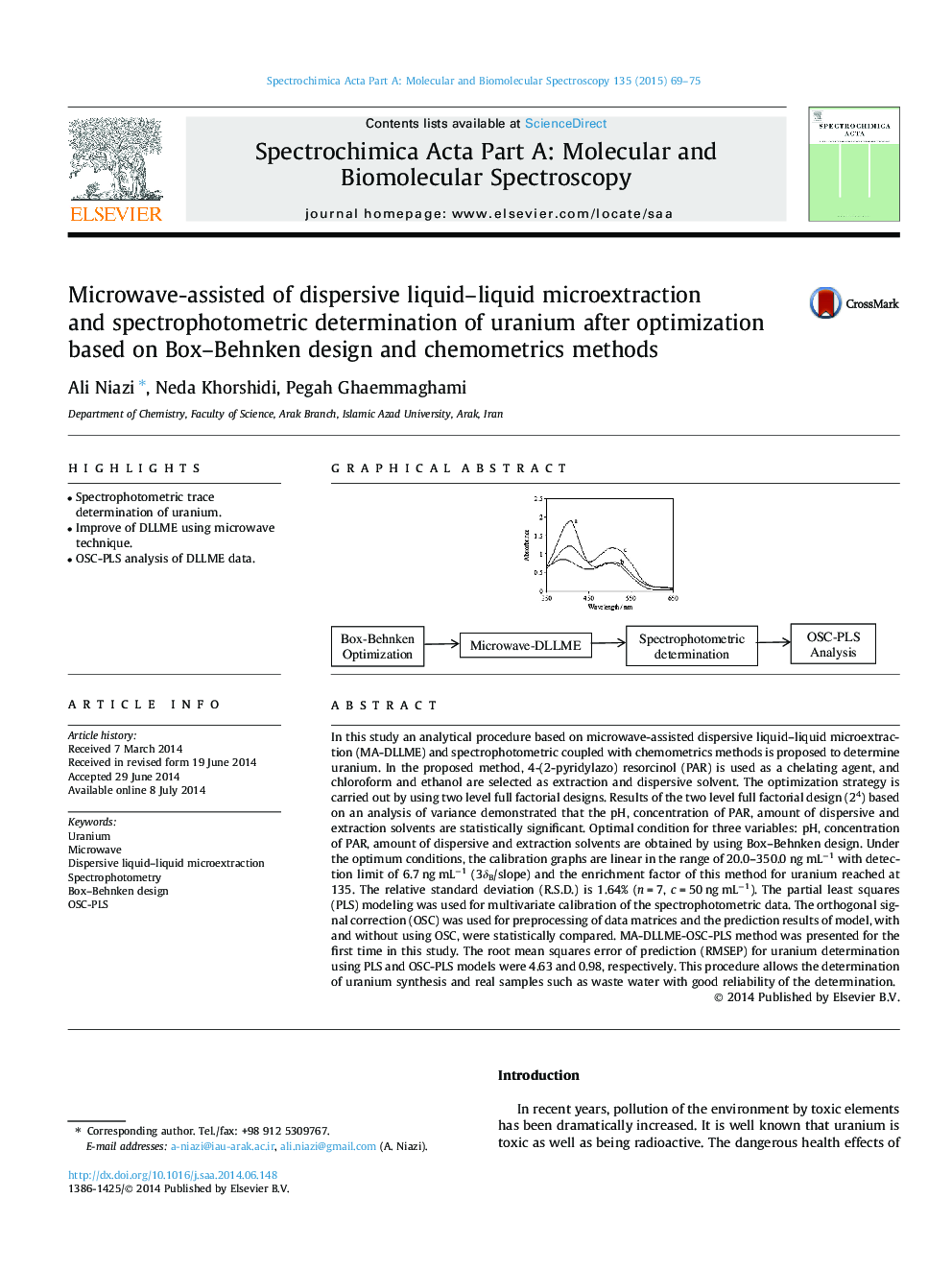| Article ID | Journal | Published Year | Pages | File Type |
|---|---|---|---|---|
| 1233165 | Spectrochimica Acta Part A: Molecular and Biomolecular Spectroscopy | 2015 | 7 Pages |
•Spectrophotometric trace determination of uranium.•Improve of DLLME using microwave technique.•OSC-PLS analysis of DLLME data.
In this study an analytical procedure based on microwave-assisted dispersive liquid–liquid microextraction (MA-DLLME) and spectrophotometric coupled with chemometrics methods is proposed to determine uranium. In the proposed method, 4-(2-pyridylazo) resorcinol (PAR) is used as a chelating agent, and chloroform and ethanol are selected as extraction and dispersive solvent. The optimization strategy is carried out by using two level full factorial designs. Results of the two level full factorial design (24) based on an analysis of variance demonstrated that the pH, concentration of PAR, amount of dispersive and extraction solvents are statistically significant. Optimal condition for three variables: pH, concentration of PAR, amount of dispersive and extraction solvents are obtained by using Box–Behnken design. Under the optimum conditions, the calibration graphs are linear in the range of 20.0–350.0 ng mL−1 with detection limit of 6.7 ng mL−1 (3δB/slope) and the enrichment factor of this method for uranium reached at 135. The relative standard deviation (R.S.D.) is 1.64% (n = 7, c = 50 ng mL−1). The partial least squares (PLS) modeling was used for multivariate calibration of the spectrophotometric data. The orthogonal signal correction (OSC) was used for preprocessing of data matrices and the prediction results of model, with and without using OSC, were statistically compared. MA-DLLME-OSC-PLS method was presented for the first time in this study. The root mean squares error of prediction (RMSEP) for uranium determination using PLS and OSC-PLS models were 4.63 and 0.98, respectively. This procedure allows the determination of uranium synthesis and real samples such as waste water with good reliability of the determination.
Graphical abstractFigure optionsDownload full-size imageDownload as PowerPoint slide
